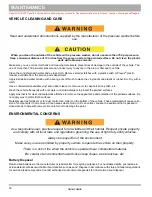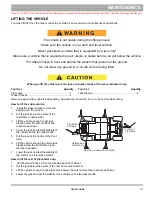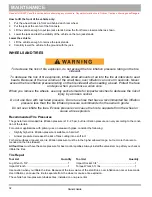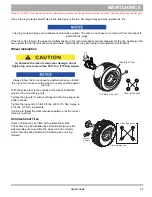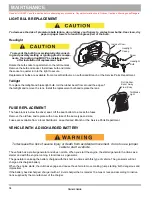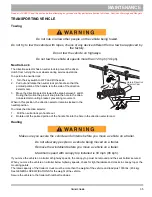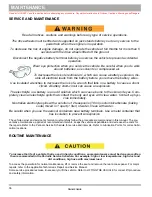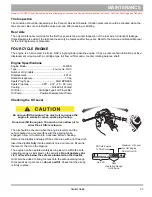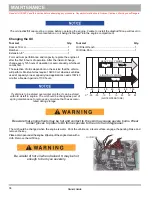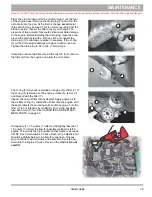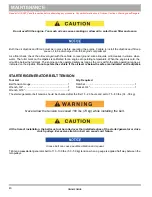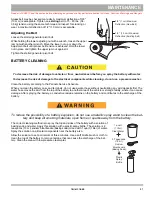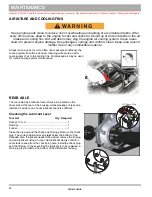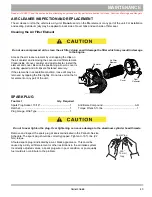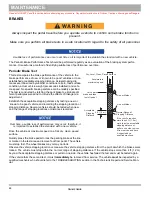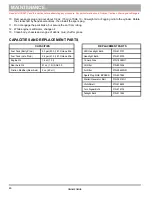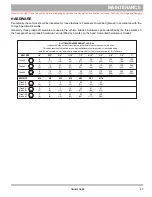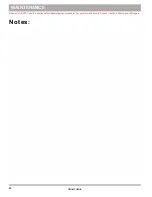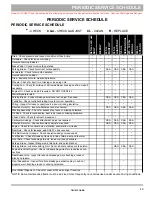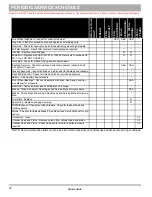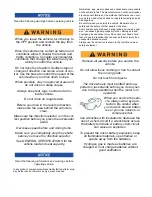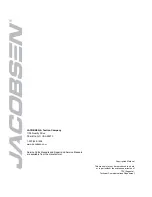
44
MAINTENANCE
Read all of SAFETY and this section before attempting any procedure. Pay particular attention to Notices, Cautions, Warnings and Dangers.
Owner’s Guide
BRAKES
Always inspect the pedal travel before you operate a vehicle to confirm some brake function is
present.
Make sure you perform all brake tests in a safe location with regard to the safety of all personnel.
A subtle loss of performance can occur over time so it is important to establish the standard with a new vehicle.
The Periodic Brake Performance Test should be performed regularly as an evaluation of the braking system perfor-
mance. It is useful as a method of identifying subtle loss of performance over time.
Periodic Brake Test
This test compares the brake performance of the vehicle to the
brake performance of new or ‘known to be good’ vehicles or to an
established acceptable stopping distance. Actual stopping dis-
tances are influenced by weather conditions, terrain, road surface
condition, actual vehicle weight (accessories installed) and vehi-
cle speed. No specific braking distance can be reliably specified.
The test is conducted by latching the park brake to eliminate dif-
ferent pedal pressures and to include the affects of linkage mis-
adjustment.
Establish the acceptable stopping distance by testing a new or
‘known to be good’ vehicle and recording the stopping location or
stopping distance. Several vehicles should be tested when new
and the range of stopping locations or distances recorded.
Over time, a subtle loss of performance may occur; therefore, it
is important to establish the standard with a new vehicle.
Drive the vehicle at maximum speed on a flat, dry, clean, paved
surface.
Quickly press the brake pedal to lock the parking brake at the line
or marker in the test area and remove foot from pedal. The vehicle
must stop fast. The wheel brakes may or may not lock.
Observe the vehicle stopping location or measure the vehicle stopping distance from the point at which the brakes were
locked. The vehicle must stop within the ‘normal’ range of stopping distances. If the vehicle stops more than 4 ft. (1.2 m)
beyond the acceptable stopping distance or pulls to one side, the vehicle has failed the test and must be tested again.
If the vehicle fails the second test, it must
immediately
be removed from service. The vehicle
must
be inspected by a
qualified mechanic who should refer to the TROUBLESHOOTING section in the Technician’s Repair and Service Man-
ual.
Latch park
brake and take
foot off pedal.
Line or Marker
Acceptable
Stopping
Distance
Normal Range of
Stopping Distance
If the vehcile requires
more than 4 ft. (1.2 m)
more than the acceptable
stopping distance or
pulls to one side, remvoe
it from service and have
it inspected by a
qualified mechanic.
Accelerate to
maximum speed.
4 ft. (1.2 m)
Line or Marker
Dry, Level, Clean, Paved Surface

